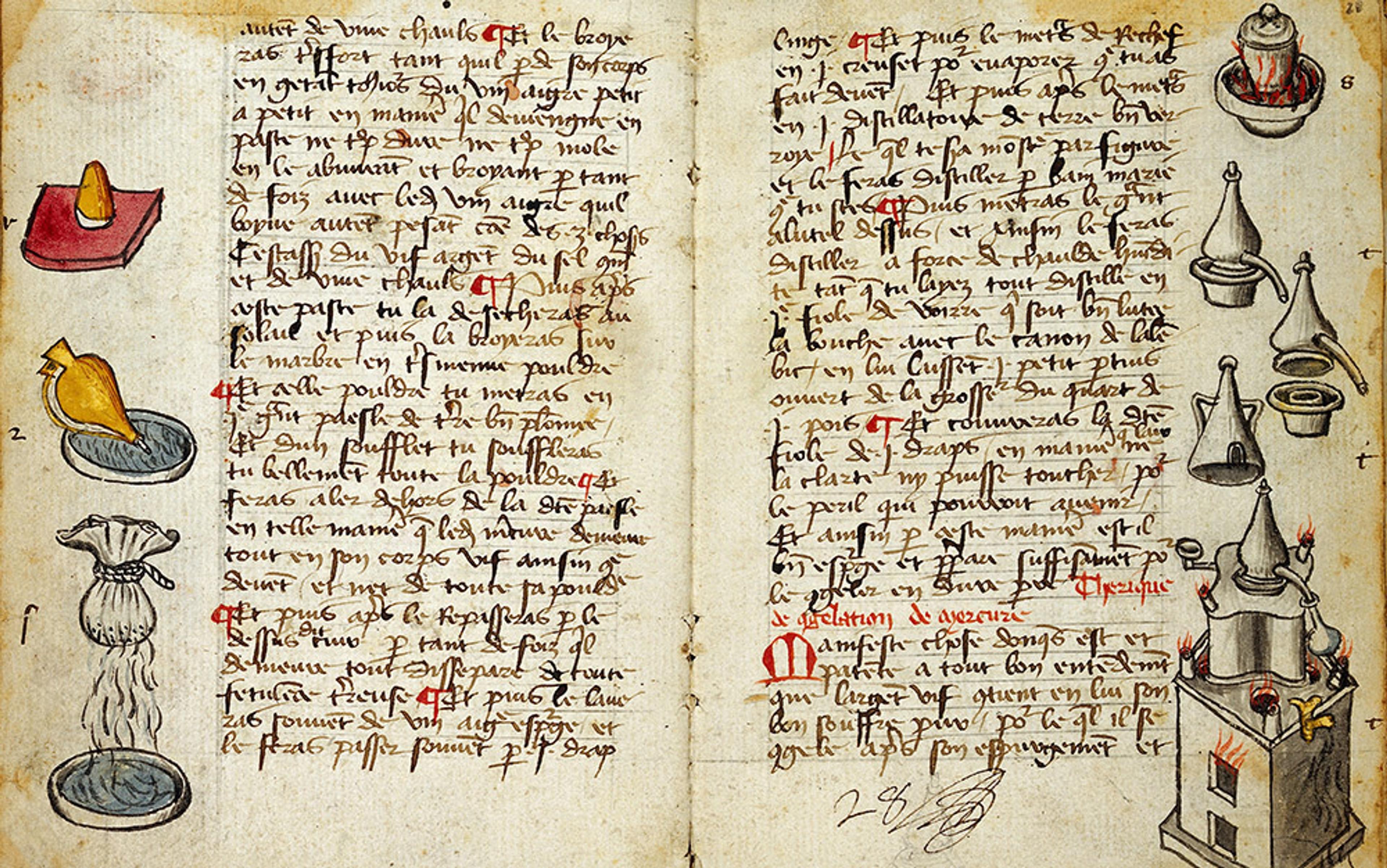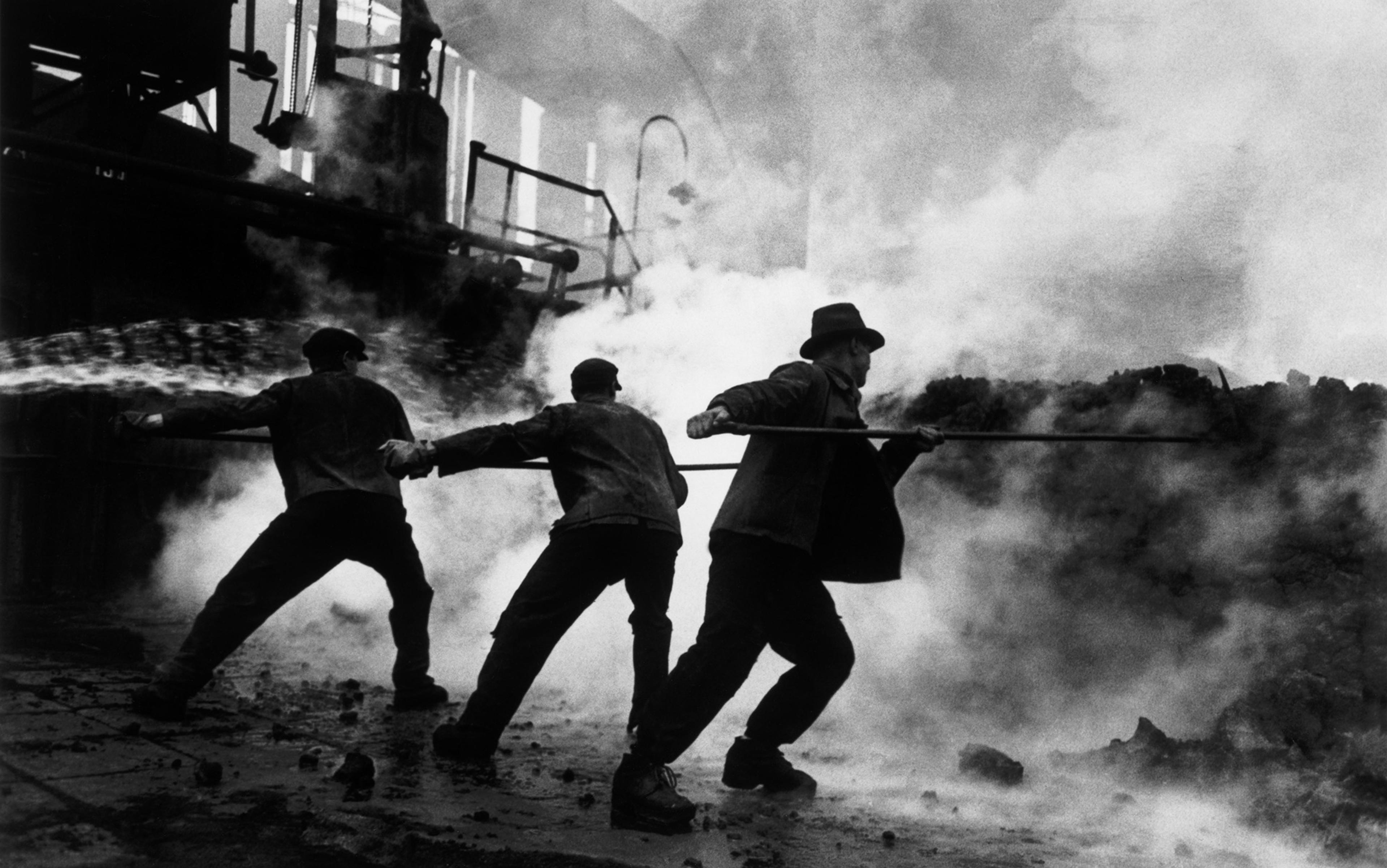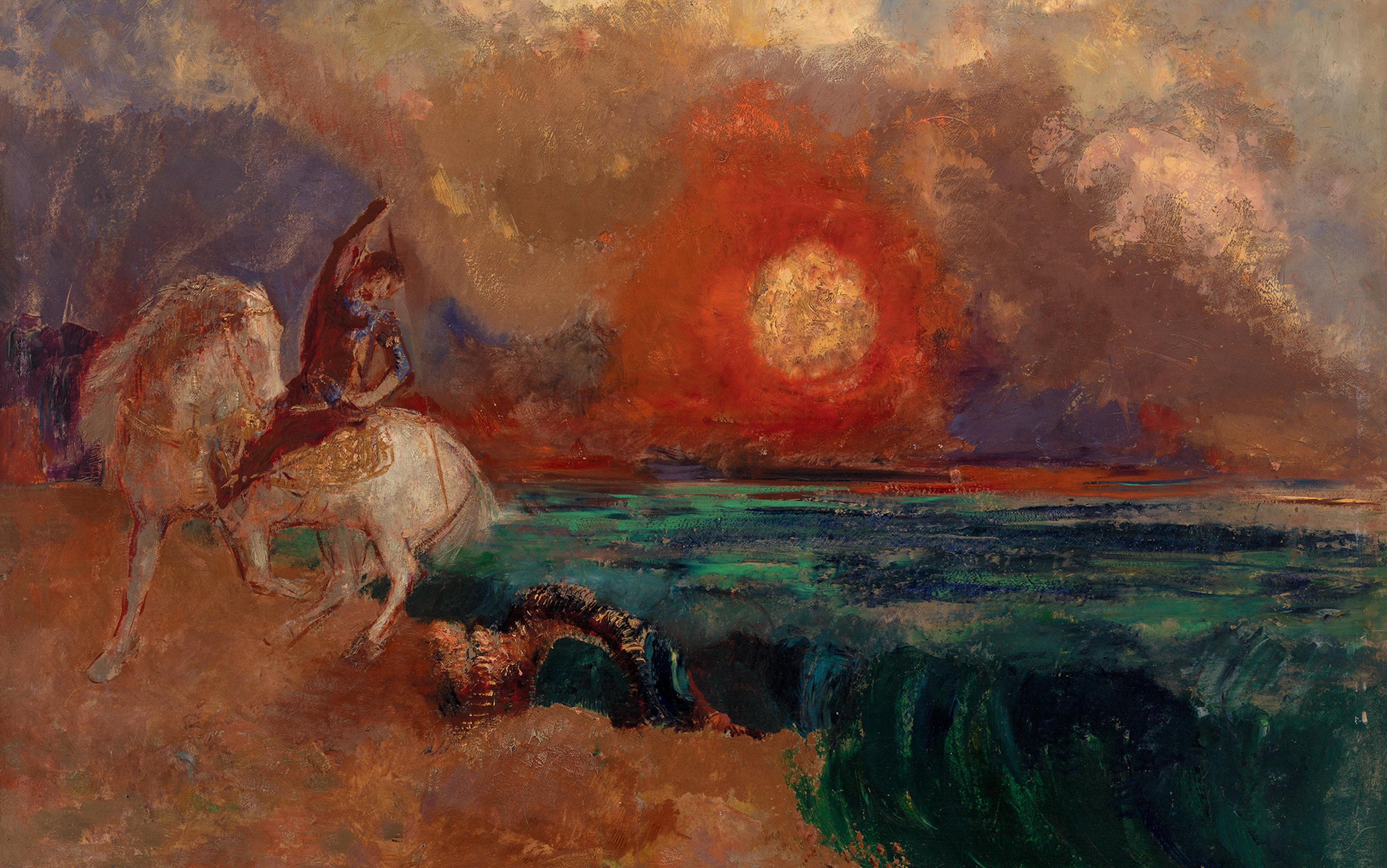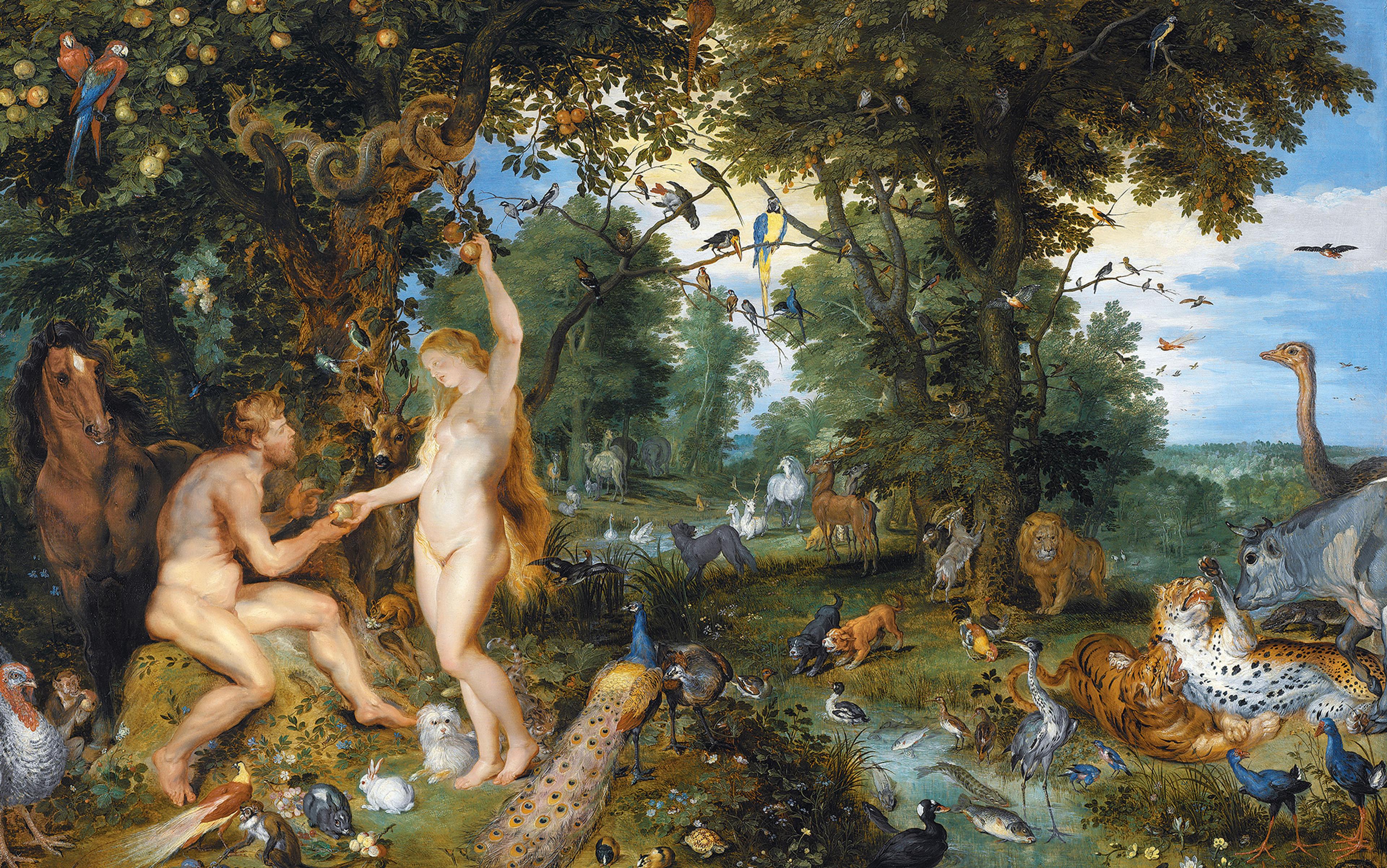Every presidential election cycle brings candidates touting their religious convictions. Being too secular is rarely a winning political strategy. In fact, Bernie Sanders might have been the first openly secular major presidential candidate in the history of the United States. Even Thomas Jefferson, though not a Christian, was a deist who firmly believed in a creator God. Pressed by the late-night television host Jimmy Kimmel, Sanders said: ‘What I believe in, and what my spirituality is about, is that we’re all in this together.’ That iconoclasm was part of his appeal, but probably part of his downfall, too.
With conservatives decrying what they see as creeping secularism, and liberals warning of attacks on the separation of church and state, one gets the impression that many Americans believe that secularism is something quite new, a product of declining morals or aftershocks from the cultural revolution of the 1960s. Yet the roots of secularism in the West run far deeper, deeper even than Jefferson and the Age of Reason. Most historians agree that secularisation took hold in the period known as the ‘early modern’ – the era between about 1500 and 1750, when science, capitalism, religious crisis and the growth of centralised states coalesced to reshape Western consciousness.
The religious implications of secularism are often misconstrued, too. Secularisation did not mean godlessness; for the most part, early modern Europeans were profoundly Christian. It was rather that the boundary between the religious and the secular became more distinct than before. As the 17th-century English philosopher Sir Thomas Browne put it, humans live ‘in divided and distinguished worlds’. The sphere of religion was diminished, so that many of the hopes and fears formerly expressed in religious terms became expressed in worldly terms. For better or worse, secularisation rested on the realisation that eternal truths are inaccessible to the intellect; only the limited insights afforded by experience in this world are relevant to the earthly career of the human race.
Accompanying the secularisation of Western society were dramatic changes in material life. It was visible everywhere in the marketplace. The newly emerging secular world was a world exploding with things: spices, tobacco and chocolate from the New World; silk and turquoise from Ottoman Turkey; porcelain and embroidery from the distant Far East; hotchpotches of things collected and displayed in pharmacies and private curiosity cabinets, such as stuffed armadillos, Native American featherwork, and unicorns’ horns (narwhal tusks, in reality).
Besides a bewildering array of exotic natural and manufactured objects, Europeans were inundated with new inventions and fashions, including drugs made by alchemical distillation, cotton fabrics dyed brilliant red with Mexican cochineal, real jewels and costume jewellery passed off as precious gemstones such as emeralds from Colombia, shipped to Europe through the faraway port of Hormuz. Everything exotic had a story, and knowing which stories were true could be a daunting task. Understanding the world of material things had become critically important.
The need to know how things worked was met by an avalanche of how-to books for popular readers, created using the newly developed printing press. Books on mechanical arts by gunners, architects, artisans and engineers had begun to appear in manuscript in the 15th century. Those early treatises, many of them lavishly illustrated, were written by experts for other professionals and were not widely distributed. Yet by elaborating mechanical processes and spelling out how things worked – in striking contrast to the well-documented secrecy of the guilds – writers began to transform the mechanical arts from personal know-how into scientific knowledge. When Leonardo da Vinci began thinking about machines, that process was well underway.
The reading revolution of the 16th century was accompanied by a profusion of how-to manuals detailing the secrets of the arts, which found an eager audience of popular readers. These homely, thoroughly practical booklets repudiated the secretive habits of the crafts and bolstered secularism by giving more people access to, and interest in, earthly truths. In the emergent Age of How-To, making was the key to knowing.
In 1535, a Frankfurt printer named Christian Egenolff published the booklet Kunstbüchlein (Skills Booklet). Cheaply printed on coarse paper just in time to be offered for sale at the Frankfurt Book Fair, this pamphlet would hardly seem a likely candidate to spark a revolution. But in many ways, it did just that: not a scientific revolution – that would come later – but a revolution in how people regarded a science that had long been viewed (for good reason) with suspicion and distrust.
Today, when we think of alchemy, we usually associate the word with the quasi-mystical but deluded search for the Philosopher’s Stone, or with shady schemes to create gold from base metals. To some extent, these negative stereotypes are justified. Alchemical fraud was rampant – which explains why Pope John XXII issued a papal bull in 1317 condemning the art, forcing alchemists to practise their art under cover. Under alchemy’s spell, adepts promised more than they could deliver, as in 1596 when Georg Honauer guaranteed to enrich the coffers of the cash-strapped Duke of Württemberg by transmuting iron into gold. Needless to say, his insane scheme failed, despite the duke’s costly support. Convicted of fraud, Honauer was hanged from a 30-foot gallows made from the iron the duke had provided for the alchemist’s experiments.
But alchemy also served more mundane and practical purposes. Women practiced alchemy in the kitchen when they cooked or prepared distilled medicinal and cosmetic waters; metallurgists were doing alchemy when they tempered steel, giving it new and improved qualities. When the Wasserbrennerinnin, or aquavit women, distilled brandy in kitchen stills, they were doing alchemy. The revolution quietly announced by Egenolff’s little Skills Booklet was to define a new, practical role for alchemy and to reorient alchemy’s goals away from grand, deluded schemes and toward everyday concerns.
Egenolff’s booklet was a goldmine of practical information. It contained recipes for artists’ pigments, techniques for hardening steel and iron, directions for etching and plating metal, and instructions for dyeing fabrics and removing spots and stains from clothing. It was, in short, a comprehensive all-purpose manual of late-medieval household and industrial technology.
In line with that function, one section of the booklet was titled ‘Rechter Gebrauch d’Alchimei’ (The Proper Use of Alchemy). The booklet, Egenolff explained, revealed ‘many previously hidden, useful and pleasant arts, not just to delight alchemists but to benefit all skilled workmen’. Dispensing with alchemy’s quasi-magical views of matter and materials, Egenolff published simple instructions, mostly recipes, that anyone could follow. To drive home the contrast between the ‘proper use of alchemy’ and its abuse, the booklet ended with a doggerel verse warning:
Eight things follow alchemy:
Smoke, ash, many words, and infidelity,
Deep sighing and toilsome work,
Undue poverty and indigence.
If from all this you want to be free,
Stay away from alchemy.
Egenolff’s little booklet caught on in popular culture. Continuously reprinted and translated, its recipes turn up in countless 16th-century books of secrets all across Europe. The booklet also spawned all manner of other how-to books. Aspiring craftsmen learned new skills, while ordinary readers learned trade secrets that were formerly mysteries. By translating craft secrets into simple rules and procedures, Egenolff’s Skills Booklet accelerated the replacement of the artisan’s cunning with the technologist’s know-how.
A recipe might effectively replace the artisan’s cunning: what had formerly passed as magic could now be seen as mere hocus-pocus
Hundreds of thousands of various ‘books of secrets’ were printed and distributed across Europe in the 16th and 17th centuries. There were how-to books for practically every conceivable craft and activity – every type of secular knowledge – including sex. There were manuals teaching how to choose a good spouse, midwives’ manuals teaching the proper techniques of childbirth, manuals that revealed parlour tricks, and manuals that taught parents how to rear children properly. Medical self-help manuals made up a huge genre. For instance, there were books that taught how to set up a distillery and make medical elixirs, perfumes and cosmetic waters from garden herbs, another branch of the ‘proper use of alchemy’.
With the explosion of printed how-to books, trade secrets lost their mystery. Books of secrets made it clear as never before that a recipe might effectively replace the artisan’s cunning, and that what had formerly passed as magic could now be seen as mere hocus-pocus. Books of secrets, flying off the printing presses, engendered a new how-to culture that permeated daily life in early modern Europe.
Another, far more famous, Renaissance how-to book that changed the course of history was Niccolò Machiavelli’s The Prince (1532) – a deeply pragmatic text about how to gain power and keep it. This was no traditional mirror for princes, explaining and flattering the characteristics of the ideal ruler. It was a brutally realistic handbook on charting an effective course through the treacherous waters of Renaissance politics.
Much as Egenolff’s Skills Booklet demystified alchemy, Machiavelli’s The Prince laid bare the secrets of statecraft, explaining, for example, whether it is better for a prince to be feared or loved by his subjects (his answer, as perhaps too many now know, is that although one would like to have both, if you cannot, then it is far better to be feared). After Machiavelli, the political order was no longer seen as an earthly projection of cosmic or divine order but a human construct designed to serve immediate and practical human concerns.
The German sociologist Max Weber, in his influential The Protestant Ethic and the Spirit of Capitalism (1905), wrote of the ‘disenchantment of the world’ that took place in the early modern period, a cultural seachange that he regarded as a hallmark of modernity. Weber said the change entailed the conviction that ‘there are no mysterious incalculable forces’ in nature; the natural world is – at least in principle – knowable, predictable, and manipulable. In a disenchanted world, everything becomes understandable and tameable, even if it is not yet understood and tamed. Instead of the ‘great enchanted garden’ of the late medieval world – an Edenic state guided by divine inspiration – Weber saw the early modern world as human-centred, and the universe as dead and impersonal.
In Weber’s view, this path to secularism began within the religious realm. He attributed disenchantment to the Protestant Reformation which, he claimed, eroded beliefs about the immanence of the holy. Relics lost their efficacy and the sacraments no longer automatically conferred divine benefits. Freed of ‘superstitious’ magical rituals, religion became a matter of internal conviction. But this claim is dubious. The Reformation did little to strengthen the barrier between the sacred and the profane. At no time did Protestant reformers reject the notion that the sacred could intervene in the world; if anything, reformers vigorously defended God’s power to punish, chastise and reward individuals and communities. Protestants didn’t deny that the sacred intruded into the secular world, only that it didn’t do so at human behest.
Neither did the Counter-Reformation Catholic Church shore up the boundary between the sacred and the profane, but instead promoted its own baroque religious magic, such as the cult of the saints. To a large extent, the world remained, in the words of the historian Robert Scribner, ‘a moralised universe’ populated by angels and demons, a world in which the birth of a deformed child or the appearance of a comet could be seen as a portent or warning of impending divine wrath.
True, the moralised world of the late Middle Ages did wane – but not due to the onslaught of reformed Christianity, as Weber would have it. Instead, it was eroded by the growth of technical literacy across all areas of culture, a consequence in turn of the rapid spread of the printing press. Within less than a century, Johannes Gutenberg’s invention had spread from Europe’s heartland to its most distant parts. In the early 16th century, Salamanca in Spain already had 52 printing presses and 84 bookshops.
The primacy of printing and the how-to culture explains why the disenchantment of the Western world coincided with a seemingly paradoxical revival of ancient magic. Tellingly, when Hermetism became the rage among Renaissance intellectuals, the ancient Hermetic paean to the magic of machines was brushed aside. Automata, cranes and siege engines were no longer seen as wondrous repositories of hidden powers; they were just mechanical contrivances. The outpouring of technical manuals and books of secrets swamped the idea that machines themselves were in any way magical. Renaissance humanists adored magic not because it endowed machines with magical power, but because magic elevated the capacity and autonomy of humans, who could dream of being magi.
the rise of the how-to books sowed the seeds of a more open and tolerant view of humanity
Technical literacy, then, led straight to Weber’s ‘disenchantment of the world’. It was a direct consequence of those how-to books that translated mysterious craft secrets into simple rules. Readers of books of secrets might not have understood why certain materials hardened iron or made fast dyes, but they had a better idea of how to do it. The world of the crafts – like that of politics – lost its magic; it broke free of its yoke to the divine.
There was a good reason why technical manuals were so often titled ‘books of secrets’. Not only did they reveal closely guarded trade practices, they assumed a world in which there no longer are ‘secrets’ in the sense of mysterious hidden forces in nature. Most how-to books took the form of recipe books. The validity of a recipe is inherently premised on a Weberian disenchanted view of the world, for the efficacy of the recipe relies on the assumption that nature is knowable, predictable and repeatable.
Because secularisation subverted the notion of cosmic and metaphysical order, the rise of how-to books sowed the seeds of a more open and tolerant view of humanity. The radical differences among peoples and cultures, made vividly apparent by the Europeans’ encounter with the Americas, inspired attempts to understand the character and customs of the indigenous peoples. Millions of non-Europeans, whose very existence was completely unknown only a generation earlier, were suddenly thrust into the European consciousness.
The European discovery of the New World created an urgent need to understand ethnic diversity. That need further shrank the realm of religious authority and gave rise, in the very long run, to the science of comparative ethnology. When Bernie Sanders said: ‘We’re all in this together,’ he touched a chord that harks back to the origins of secularisation.
Looking back at the history of disenchantment naturally raises the question of permanence: can the world become re-enchanted? There are disturbing signs that it can, at least in the arena of politics. Here, too, Weber offered an important insight. He pointed out that bureaucracies are good at enforcing rules but not necessarily at defining the purposes that inspire them. This opens a space for the emergence of charismatic leaders who redefine those purposes and sometimes transform the political system in the process. Charisma is utterly enchanted; power casts its own irrational spell.
The founding fathers of the US took care to craft a political system governed by the rules of disenchantment, a system that would prevent demagogues, through their charisma, from gaining power. Showmanship has long been part of US politics, for example in the showy pomp of political rallies and party conventions. Yet the current presidential campaign carries signs that charisma has re-entered politics with a fervour rarely seen before.
Pundits seem befuddled by the rise of Donald Trump, who defies current political norms and whose followers seem unswayed by traditional policy arguments. Weber’s concept of charismatic leadership offers some insights. Charisma is founded on perceptions. It tends to arise in crisis situations. And no one knows better than Trump that the perception of crisis can be created by imaginative manipulation of the media.
The deep roots of secularism in Western culture might provide comfort to those who worry about the dangers lurking in the present overheated political climate. Though it is regularly decried in right-wing rhetoric, secularisation made our culture less dogmatic and more humane. The rise of how-to thinking also enabled much of the modern, productivity-focused technological economy, which almost nobody wants to endanger. A healthy dose of secularism and its companions, skepticism and disenchanted reason, might be exactly what is needed to tame the out-of-control passions of the day.






